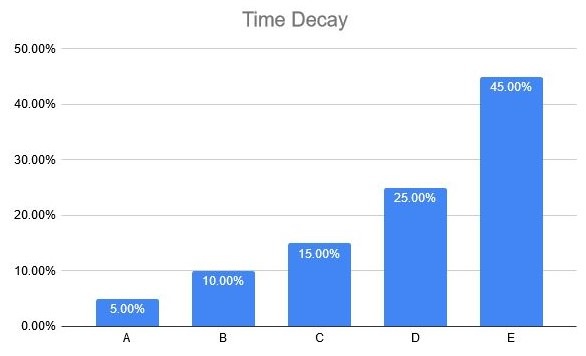What is an attribution model?
An attribution model is a rule or set of rules, that determines how credit for sales and conversions is assigned to touchpoints in conversion paths. A touchpoint is where a customer interacts with a website. During a customer’s journey, they may visit a website numerous times. The following models help you to better understand how different channels (touchpoints) are contributing to conversions.
Setup Attribution Modeling in Google Analytics
If you have Google Analytics you can set up attribution modelling and locate it under conversions as “Multi-Channel funnels”.
Common Attribution Models
Last Interaction
In the Last Interaction attribution model, the last touchpoint would get 100% credit for the conversion. This model is useful when your ads are designed to attract people at the moment of purchase, or your sales cycle does not have a consideration phase.
Example:
A user sees an ad on social media for a movie they want to see. The user then clicks the ad and buys a ticket from the website. The advertising channel would be credited with the conversion as it was the last interaction the user had before converting.
Last Non-Direct Click
In the Last Non-Direct Click attribution model, all direct traffic is ignored, and 100% of the credit for the conversion goes to the last channel that the customer clicked through from before converting. This model is useful if the customer has already been won over before coming to the site.
Example:
A user sees an ad on social media for a movie they want to see. The user then clicks the ad and views the showtimes for the movie on the website. The user then abandons their journey to find out if their friends would be able to come. Later, the user comes back to the website directly to purchase the tickets.
The advertising channel would still get the credit as it was the last channel the user came from before converting. If the last interaction model was used, Direct Traffic would be awarded the conversion.
Last Google Ads Click
In the Last Google Ads Click attribution model, the last Google Ad that was clicked gets 100% credit for the conversion. Use this model if you want to identify and give credit to your Google ads.
Similar to the model above but it is focused on Google Ads.
First Interaction
In the First Interaction attribution model, the first touchpoint gets the credit for the conversion. This model is useful when you want to understand how your customers are finding you.
Example:
A user decides to go to the movies tonight and searches for movie showtimes on Google. They then click the result they want and purchase their tickets. Organic would be credited with the conversion as this was the channel that sent the user to the website.
Linear Attribution
A Linear attribution model gives each touchpoint equal credit. This is a useful model when your conversion funnel is designed to maintain contact throughout the user journey.
Example:
It turns out that the user is a movie buff and has subscribed to the movie newsletter email. They see a review about an upcoming film and click the email to then read the review. A few days later the same user decides to see the movie. They Google showtimes and visit the site again to see when the movie is playing. Closer to the showtime the user comes back to the website directly and purchases their ticket.
With the Linear model, each channel is credited with an equal portion of the conversion. Email, organic, and Direct would each receive 33.3%.
Time Decay
In the Time Decay attribution model, the touchpoints closest in time to the sale or conversion get most of the credit. This is the model to use if you are running short period promotions where more recent interactions are more valuable to you.
Using the scenario from before where the user has subscribed to the movie newsletter email and read a review about an upcoming film, used Google to find showtimes and then came back directly to purchase tickets. Each channel would be credited with part of the conversion but the later channels would receive more credit.
Position Based
In the Position Based attribution model, 40% credit is assigned to each the first and last interaction, and the remaining 20% credit is distributed evenly to the middle interactions. This model provides you with an understanding of how your customers found you and when they converted.
Using the scenario from before where the user has subscribed to the movie newsletter email and read a review about an upcoming film, used Google to find showtimes and then came back directly to purchase tickets. Each channel would receive credit but the first interaction and last interaction would get the majority.
Choosing an Attribution Model
Which attribution model you choose will depend on which channels are being used and the user journey through the conversion funnel. It is a good idea to compare the different models to each other as there are multiple touchpoints in a user’s online journey. By comparing the different models you will get a better understanding of how your audience is finding you and how they are converting.
The channel you choose should provide you with the most valuable insight. So, if you want to know how users are coming to convert, you would use the Last Interaction model. But, if you need to understand how they are finding you, the First Interaction model will show you which channel is creating awareness.
There is no “perfect” model, the model you choose should be the one that is the most beneficial to you.










